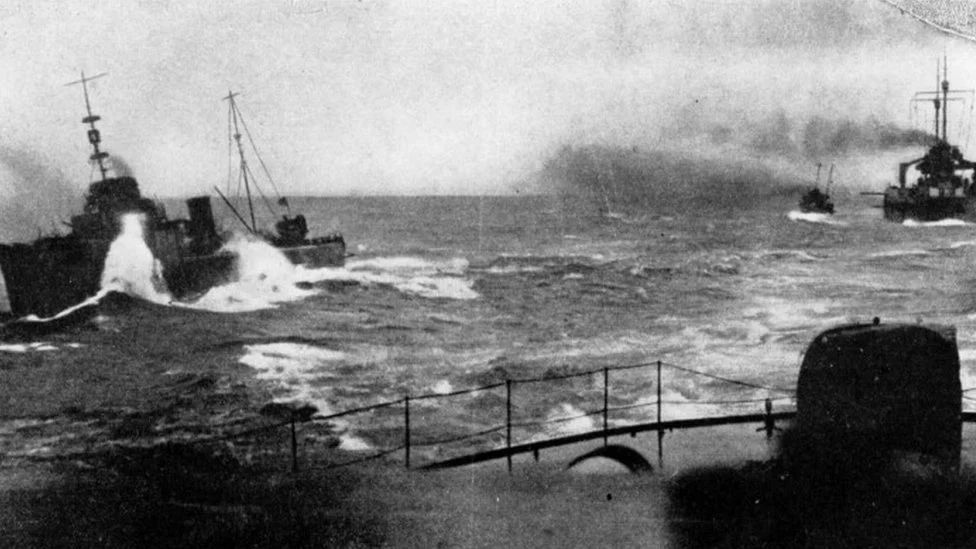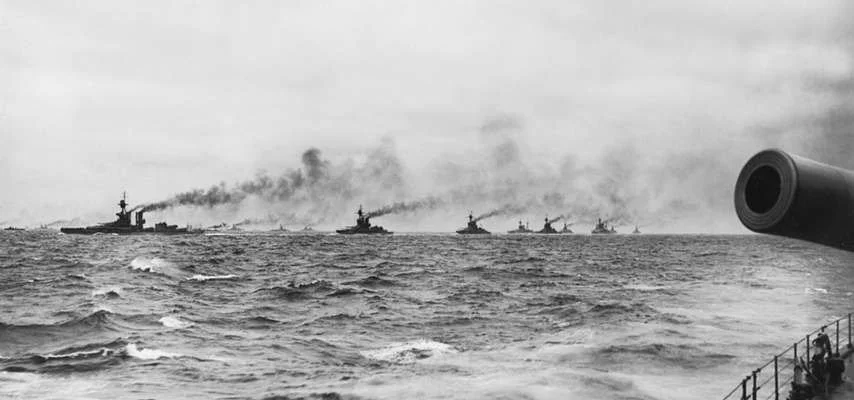The Battle of Jutland: Clash of the Dreadnoughts
The Battle of Jutland, fought between 31 May and 1 June 1916, was the largest naval battle of the First World War— and the only full-scale clash between the mighty battleships of Britain’s Royal Navy and Germany’s High Seas Fleet. It was a confrontation that would decide who truly ruled the waves.
By 1916, Britain’s Royal Navy had long been the world’s most powerful fleet, enforcing a blockade that choked off German supplies. The Germans, determined to challenge this dominance, hoped to lure out and destroy a portion of the British fleet with a well-planned ambush near the coast of Denmark’s Jutland Peninsula.
Both sides fielded immense power:
The Royal Navy’s Grand Fleet, commanded by Admiral Sir John Jellicoe, brought 151 ships, including 28 battleships.
The German High Seas Fleet, under Admiral Reinhard Scheer, deployed 99 ships, including 16 battleships.
What followed was a brutal and chaotic engagement spread across the cold waters of the North Sea.
The clash began in the late afternoon of 31 May 1916, when British and German scouting forces encountered each other by chance. Vice-Admiral David Beatty’s British battlecruisers met Admiral Franz von Hipper’s German counterparts, and the two groups quickly exchanged devastating fire.
Within minutes, British ships HMS Indefatigable and HMS Queen Mary were blown apart in massive explosions — a grim reminder of how deadly modern naval gunnery had become. As night fell, both fleets converged, and a massive, confused battle erupted.
The sea was lit by gunfire, flashes of explosions, and the searchlights of ships trying to identify friend from foe. Torpedoes streaked through the waves as both sides fought in the dark, with near misses and tragic hits alike.
By dawn on 1 June, both sides had suffered heavy losses.
The British lost 14 ships and over 6,000 men.
The Germans lost 11 ships and about 2,500 men.
Tactically, Germany could claim victory — it had sunk more ships and inflicted greater losses. But strategically, Britain still controlled the seas. The Royal Navy’s blockade continued, slowly strangling the German war effort for the rest of the war.
The High Seas Fleet never again ventured out in force.
The Battle of Jutland didn’t deliver a clear winner, but it proved one thing: naval warfare had changed forever. It showed the limits of even the most powerful fleets and foreshadowed the growing role of submarines and aircraft in future wars.
For the sailors who fought there, it was a brutal, unforgiving fight — one that tested courage, endurance, and the machines of war to their limits.

